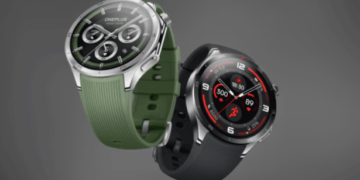WASHINGTON (AP) – As traffic fatalities rise in the United States as the country emerges from the coronavirus pandemic, the federal agency in charge of auto safety is shifting jobs with a backlog of rules. pending orders ordered by Congress that are years overdue and estimated to save thousands of lives.
According to a highway safety group of state governors, the United States faces an “epidemic of car collisions” as safety regulations languish.
A review by The Associated Press of the rule implementation process by the National Highway Traffic Safety Administration (NHTSA) under the past three U.S. presidents found that at least 13 road safety rules Cars are overdue, including a rear-seat seatbelt reminder requirement passed by Congress in 2012 that was to have been implemented in 2015.
David and Wendy Mills wonder if their 16-year-old daughter would still be alive if the reminder rule had been implemented.
Kailee Mills was riding in the back seat of a car to a Halloween party in 2017 from her home in Spring, Texas, when she unbuckled her seatbelt to walk up to a friend and take a selfie. Moments later, the driver went off the road and the car flipped over, throwing Kailee out.
She died instantly. His friends, who kept their seat belts on, survived. They only received minor injuries.
“The government shouldn’t take that long to take safety measures,” said David Mills, who started a foundation in the Houston area honoring Kailee aimed at promoting the use of seat belts. The foundation maintains a list, known as “Kailee’s Angels,” of teens who have died in traffic accidents across the country for not wearing a seatbelt.
That seatbelt rule is now going to start the cumbersome regulatory process in January, but it could take years. The agency has repeatedly missed previous deadlines, including some promised in federal courts.
The growing backlog of back rules is one of the greatest threats to the federal agency since its founding in 1970, when public pressure led by activist Ralph Nader motivated NHTSA’s mission to “save lives, prevent injuries, and reduce the economic costs incurred. because of the crashes on the roads ”. Activists now fear that their mission could be bogged down under President Joe Biden, at a time of increasing car accidents during the pandemic.
In many cases, backward rules also face opposition from powerful industries, calling them expensive, outdated, or restrictive. Other pending rules have been delayed by bureaucracy or sidelined by other priorities. President Donald Trump obstructed at least four important safety rules on developing roads, such as medical evaluations of truckers for sleep apnea.
Among the rules awaiting action from NHTSA is one on infant seat side impact standards, originally ordered to begin enforcement in 2014. In July, a group of attorneys general from 17 states and the District of Columbia They wrote to the Biden administration asking for immediate action and calling the delays unacceptable and worrying.
Others would require automakers to keep safety defect records for at least 10 years and to implement ejection protection measures for larger buses. Standards for self-adjusting headlights, begun in 2018, are incomplete, despite industry backing.
“It’s infuriating,” said Jonathan Adkins, executive director of the Governors Association for Highway Safety, which represents state highway safety officials and calls crashes an epidemic. The group has been asking for seatbelt reminders since 2015, when it noted that fewer passengers were wearing seatbelts when riding Uber, Lyft and other taxis per app.
The infrastructure bill pending in Congress could add to NHTSA’s portfolio with its sweeping technology requirements, from new devices for measuring driver’s breath alcohol to stricter standards for reporting safety defects.
The 600-employee federal agency has not had a permanent administrator since 2017. Steven Cliff, a former deputy executive director of the California Air Resources Board, which regulates car emissions, is the interim administrator.
“We need a NHTSA administrator who is confirmed and has the political capacity to accomplish some things,” Adkins said. “We are at a bad point in traffic safety. We have work to do and we need the attention of the administration ”.
NHTSA, which is part of the Department of Transportation, declined to comment on the increasing delay. Instead, the agency released a list of steps it has taken to deal with car safety, including recently announced fuel economy standards that have been proposed by the Biden administration to address climate change.
The agency points in part to plans to require or set standards for automatic emergency braking systems on new passenger cars and heavy trucks, a 180-degree turn from the Trump administration, and to advance some of the delayed rules, although it offered no guarantees on the schedule. NHTSA has promised to require what it said are rigorous testing standards for autonomous vehicles and to establish a national database to document crashes of those vehicles.
The Alliance for Auto Innovation, the trade association representing all carmakers except Tesla, declined to comment, but some manufacturers have made progress of their own on safety issues, such as the automatic brake standard and a reminder to check the rear seats. so that motorists do not forget children in cars in very hot weather.
Some 38,680 people died in traffic accidents in 2020, the most since 2007, although the total number of kilometers traveled fell at the start of the pandemic. In the first three months of 2021, 8,730 people were killed in car crashes, an increase of 10.5% over the same period last year.
Last year, more than half of all deaths involved drivers or passengers not wearing seat belts, the highest total since 2012, according to NHTSA.
Each year, more than 800 people who ride in the back seat without wearing a seat belt are killed in car accidents. An analysis of NHTSA data by the governors’ association concluded that wearing the belts would have saved them.
In recent months, states have taken steps to strengthen the use of seat belts. In Connecticut, for example, Democratic Gov. Ned Lamont signed into law a law that went into effect this month to require passengers 16 and older to wear seat belts. The younger passengers already had it required.
“I can’t say that the US auto industry regulator is on the right track,” said Cathy Chase, president of Advocates for Highway and Auto Safety. “It is time for them to move forward.”




















































































